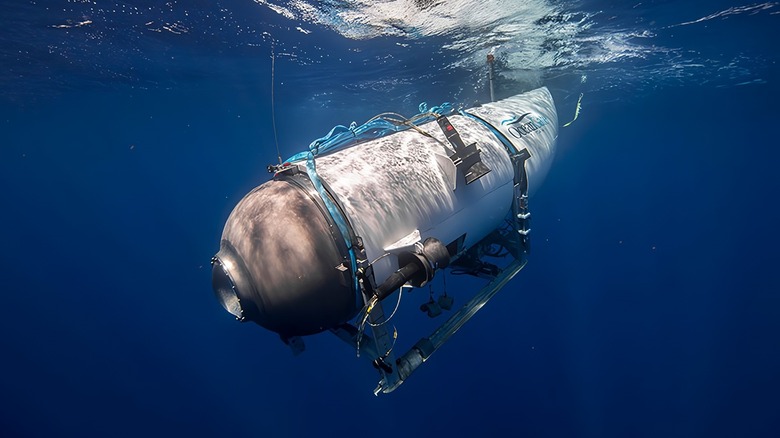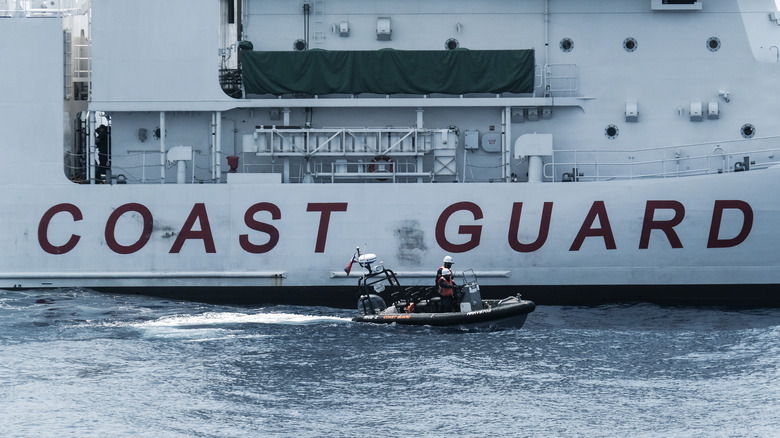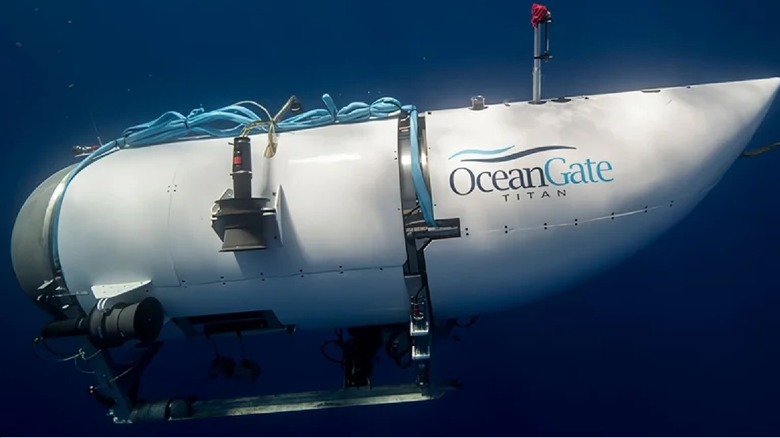US Coast Guard Confirms Titan Submersible Was Lost In 'Catastrophic Implosion'
During a press conference on June 22, the United States Coast Guard confirmed that teams located a debris field near the Titanic "consistent with the catastrophic loss" of the OceanGate Titan submersible vehicle. An ROV from Horizon Arctic spotted the tail cone of the Titan on the ocean floor near the Titanic. Additional evaluation of the region turned up more debris, indicating the submersible imploded under the pressure of the ocean due to an unknown catastrophic failure of the vehicle's "pressure chamber." The families were immediately notified upon this discovery.
All five passengers traveling on missing submersible "have sadly been lost," OceanGate says in statement pic.twitter.com/eQGxaDP3mQ
— philip lewis (@Phil_Lewis_) June 22, 2023
The confirmation comes approximately four days after the Titan submersible went missing on June 18 during a tourist trip to the Titanic. The submersible was controversial during its time, as it lacked regulatory certification and experts had reportedly expressed grave concerns about its safety profile, warning that it could eventually result in a "catastrophic" outcome for passengers. OceanGate CEO Stockton Rush — who argued against classification in a 2019 blog post, claiming it stifled innovation — was the pilot of Titan at the time it went missing.
Original article below.
The debris field was spotted on Thursday morning
The United States Coast Guard claims a debris field has been found during the search for the missing Titan sub. According to the First Coast Guard District on Twitter, the field was found close to the wreck of the Titanic, which the submersible had been diving to explore. Titan went missing on June 18, with the alarm being raised several hours after communication was lost. The vehicle began its journey with five crew members on board and is allegedly fitted with a 96-hour emergency oxygen supply. Following the disappearance, an international search and rescue mission was launched.
A debris field was discovered within the search area by an ROV near the Titanic. Experts within the unified command are evaluating the information. 1/2
— USCGNortheast (@USCGNortheast) June 22, 2023
The sub was close to the Titanic's wreck when its last known communication was received. The search so far has involved planes, ships, sonar, and underwater vehicles. Remote-controlled robots capable of diving to the Titanic's depth recently arrived in the search area, and it is one of these "remote operated vehicles" which discovered the debris field.
While there has yet to be any confirmation, debris from the submersible would suggest it had suffered an implosion. Implosions occur when a structure can no longer withstand the outside pressures it is facing, which at the bottom of the Atlantic is around three tons per square inch. It is important to note that nothing has been confirmed at this time, and there is a chance that the debris field is unrelated to the Titan. The U.S. Coast Guard will be holding a press conference at 3 P.M. Eastern Time, where more details on the debris field will likely be confirmed.
Five missing on board submersible
Five passengers are known to have been on Titan when it plunged into the North Atlantic four days ago. OceanGate CEO Stockton Rush was on board, along with businessman Shahzada Dawood, his 19-year-old son Suleman, billionaire Hamish Harding, and respected French explorer Paul-Henri Nargeolet. Tickets for the dive started at $250,000 a piece, and offered a unique look at what remains of the Titanic, which famously met its end on April 15, 1912.
While an implosion is one possible cause of the sub's disappearance, there is still a chance it is on the sea bed intact or managed to resurface. There is hope that the Titan's crew is still alive, and a large-scale search and rescue mission was swiftly mounted as soon as the alarm was raised. Unfortunately, due to Titanic's depth, that mission is quite complicated. The wreck lies more than 12,000 feet below the surface of the ocean, creating a unique set of problems for such a rescue mission. Specialist equipment had to be transported to the search area, and some of that only arrived this morning.
BREAKING: Friend of two of the men missing on board the submersible confirms the debris found was "a landing frame and a rear cover from the submersible", after receiving WhatsApp message live on Sky News.
Latest here: https://t.co/L29qKaj8nR
📺 Sky 501 pic.twitter.com/JtqbuhBG6w
— Sky News (@SkyNews) June 22, 2023
Shortly after the US Coast Guard broke news of this discovery, rescue expert David Mearns reported on UK's Sky News that some of the debris allegedly includes "a landing frame and a rear cover from the submersible," though this has not been confirmed by authorities. You can see the clip in the tweet embedded above.
OceanGate, the company which runs the expeditions, has been accused of cutting corners when it comes to safety with its CEO Stockton Rush boasting about "breaking the rules" in previous news pieces. Some of Titan's features singled out for criticism include a Logitech gamepad in place of traditional submarine controls, and an overall lack of regulatory approval for the vessel as a whole.


